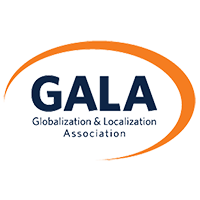Are Multilingual Conference Calls the Next Big Thing?
As event organizers cancel in-person gatherings in favor of going online in response to COVID-19, there’s a ready market for those who manage to make online experiences simultaneously available in multiple languages.
Globalization has been the driving force of business through the 21st century’s first two decades. Having team members based everywhere from Boston to Brussels to Bangalore isn’t unique anymore – it’s standard. When the COVID-19 pandemic hit in early 2020, some experts were quick to announce that it would bring globalization to a screeching halt, but new ways of thinking and new technology are making sure that doesn’t happen. Among the most potentially groundbreaking and exciting pieces of new technology are improved conference call capabilities and simultaneous interpretation.
Bringing people together
Almost everyone who’s worked in an office is familiar with conference calls and the technology behind them, but concerns about COVID-19 have led to a worldwide boom in remote working, as companies have encouraged or required employees to stay home. And while a lot of companies have seen their stock prices drop dramatically due to the disruption caused by the virus, some software vendors that make remote work easier (like videoconferencing software provider Zoom) have seen their share value skyrocket.
Making sense of it all
Interpretation, for our purposes, means oral translation between parties. An interpreter is the person who facilitates meetings, while a translator makes sure written text says the same thing in multiple languages. Simultaneous interpretation refers to a situation where the speaker’s words are translated into another language as they speak. This is generally reserved for large event settings and is a completely different skill from consecutive interpretation, where an interpreter listens to one person speak and then translates what they’ve said into a different language.
How it works
A multilingual conference call or virtual meeting works like a regular conference call, connecting several people in different locations with the added twist of including a simultaneous interpreter on the call. The interpreter can be located anywhere, and all they need is a computer-based audio interface. There may be as few as two people conversing in two languages with one interpreter, but many emerging platforms allow up to 100 people to participate in the same call. Participants don’t require special hardware – a laptop or smartphone is all they need to log in and participate from anywhere in the world in the language of their choice. What’s more, the event and the interpretation can be recorded and easily replayed afterwards.
The Argos way
We’re excited about this technology for several reasons, including a couple that may not be obvious at first glance. Simultaneous interpretation should dramatically reduce the time needed to complete a call – if you’ve ever participated in an interaction with standard interpretation, you know there’s often far too much time spent waiting around for your counterpart to finish speaking. Also, the functionalities being developed will enable users to switch between languages on the fly, so if you’re lucky enough to be bilingual and you want to check on the quality of the interpretation, a simple click will allow you to switch. Contact us to learn more about our track record of staying on the leading edge of translation and localization technology.
Want to know more?
- Coffee Break: Talking Translations and Technology
- Coffee Break: Talking Technology and Localization




